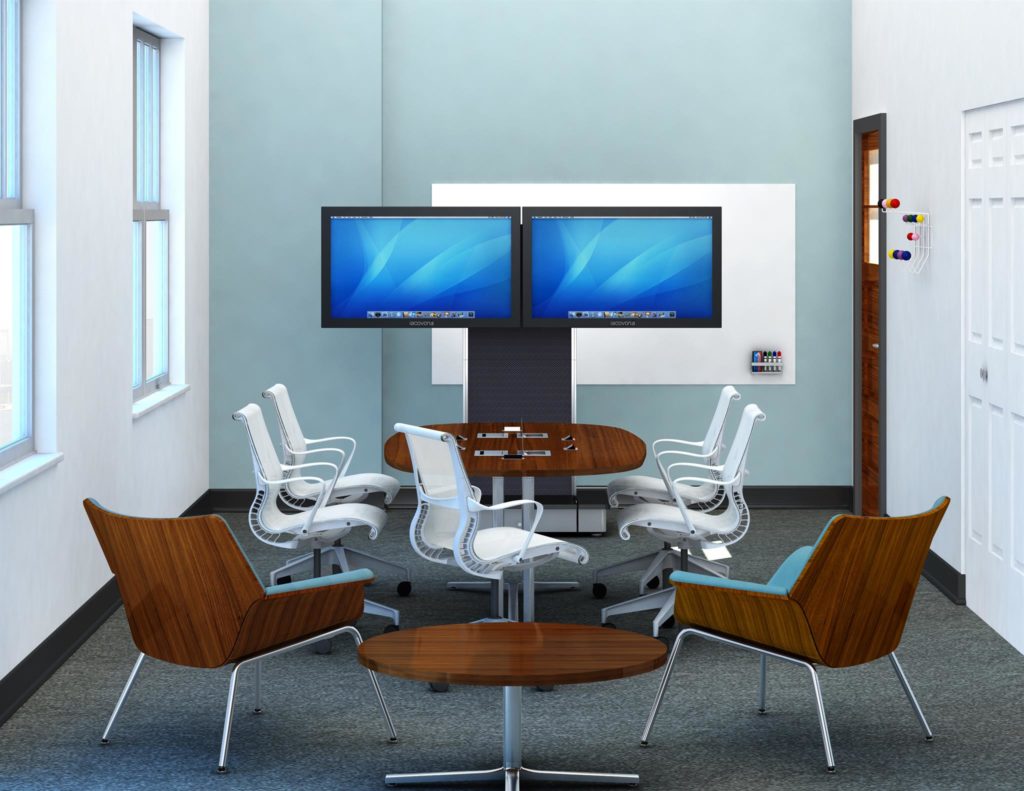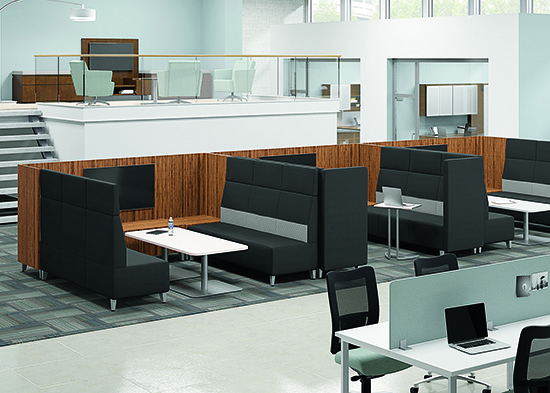Baby boomers, Gen Xers and Millennials are only three of the five generations working together for the first time in history. Accommodating each of their competing needs can be a challenge, so today, we asked two of our interior designers to share their tips on how to accommodate the diverse group of people working in a single office.
What are the challenges?
Katie Manso: One of the challenges is that the needs and wants of the workplace vary over different generations. Some prefer to work independently and in more of a traditional layout. While younger generations tend to gravitate towards more open, collaborative spaces. Younger generations are also more technology driven.
Sara Price: I agree. Over the years, we’ve seen that older generations often prefer drywall and doors. They value having closed office spaces, while the younger generation likes things to be more open. They look for minimal walls and lower workstation heights, if of course, they’re even using a dedicated workspace.

How can they be overcome?
Katie: I think the best way to overcome the challenge and accommodate the employees is with flexible spaces. Providing a good balance in work environments with different functions – collaboration spaces, quiet workspaces and private meeting areas can help meet the diverse ways that people prefer to work. If employees are comfortable in their work environment, I think they tend to be more productive.
Sara: We recommend designing a variety of spaces that strategically blend the different ways people like to function throughout the office space. For example, there might be less private offices; however, companies can include several, little, private hide-outs or work spaces for those who’d like a retreat. It’s also important for companies to stay on top of today’s trends, while holding onto pieces of more timeless designs.
What does each generation look for? And, which design solutions work for each one?
Sara: The younger generations typically value a relaxed atmosphere and prefer not be tied to a single space, like a cubicle. They also tend to be tech savvy, but come with high expectations for employers. In contrast, baby boomers archive more paper and often require more storage. They also, as I mentioned before, like private or closed-off workspaces.
When it comes to designing an office, I recommend incorporating today’s trends to keep the younger generations happy. Staying up with current technology and designing more relaxed meeting and offices spaces are good places to start. We’ve found that millennials and Gen Xers like to see more multipurpose spaces. For example, a “Meet & Eat” area can serve as both the breakroom and a more relaxed meeting space, whereas boomers might still desire a traditional board room.

Katie: I think older generations, like the baby boomers, want to have quiet, more traditional spaces to work. They like face-to-face interaction, so private meeting spaces are critical. The younger generation (millennials) look for more relaxed, collaborative spaces. They tend to enjoy being able to move around and work in different areas within the space. A more minimalistic design works well for this generation, as they typically believe in having a paperless office. They are also very technologically savvy, so video conferencing is becoming increasingly popular with them. As Sara mentioned, accommodating new technology is very important to this group.

